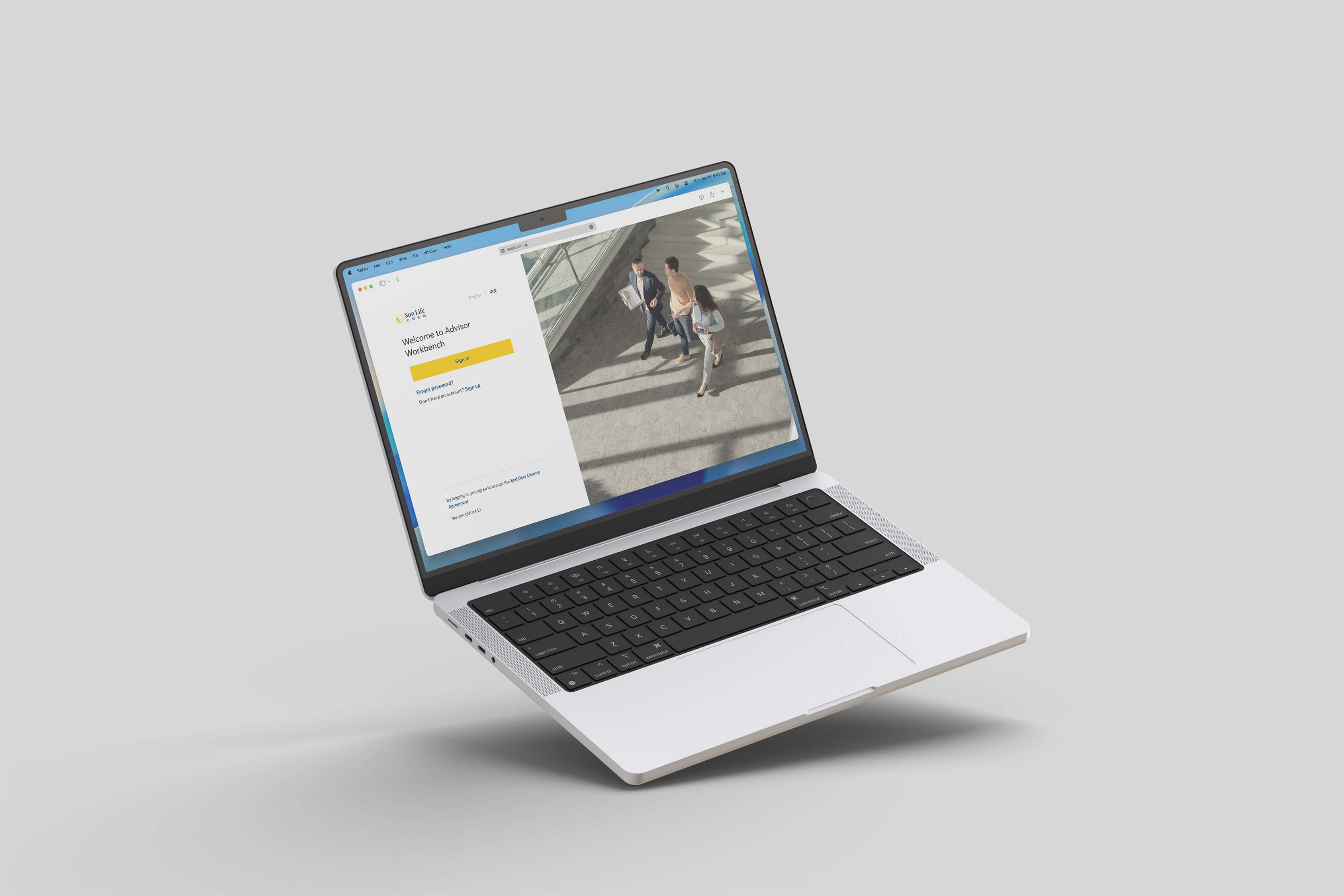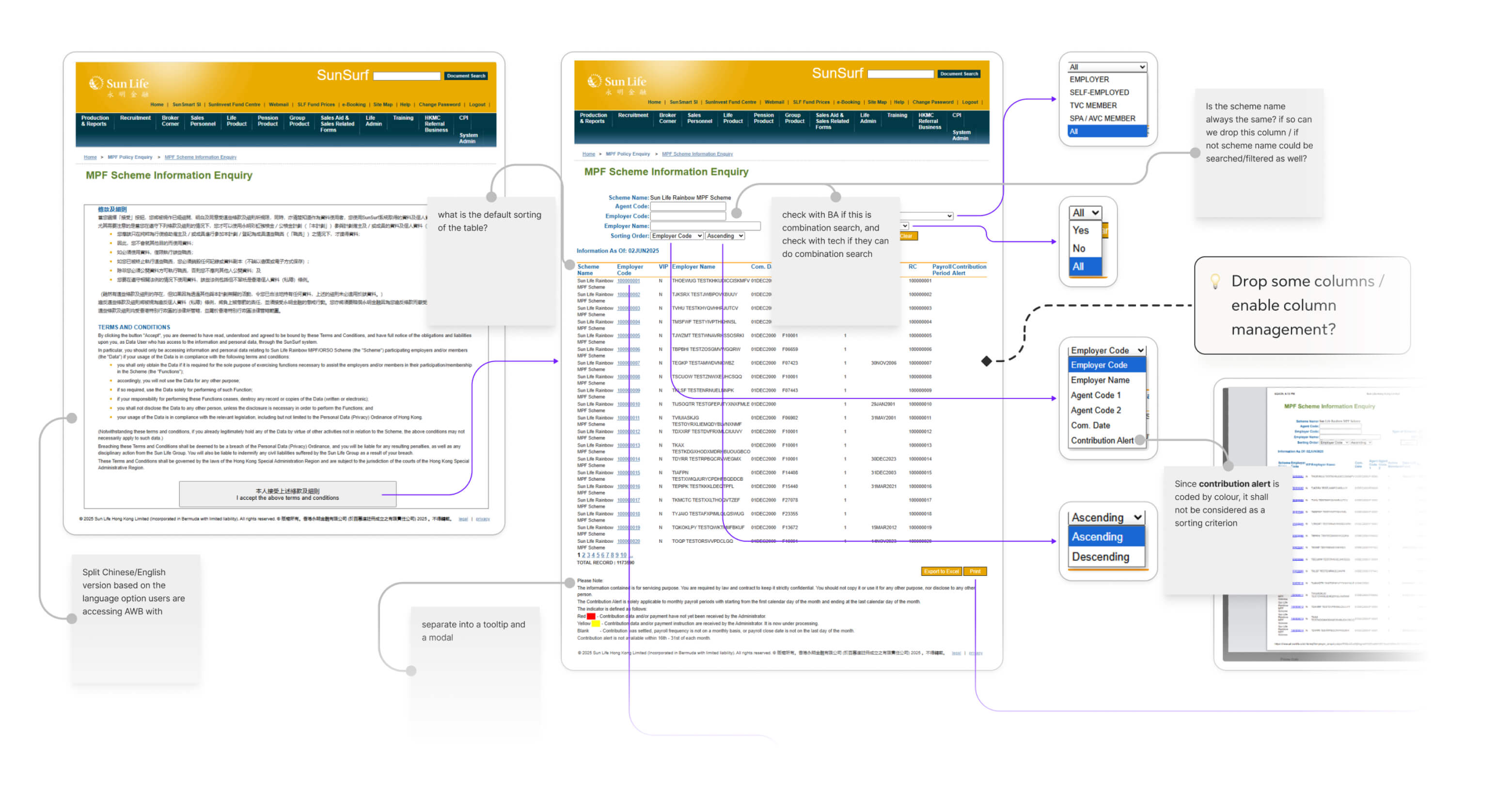① Background
As one of the dominant players in insurance market, Sun Life needed to upgrade its advisor tool to maintain its leading position in digital era.
While Sun Life’s existing advisor platform has helped advisors to expand their business for years, it was falling behind. The tool has been outdated compared to the superior solutions released by their major rivals — solutions that are increasingly preferred by brokers and banca partners.
To boost advisor productivity and improve client service, the company decided to revamp the tool to enable advisors manage client profiles, process new business, and perform other critical tasks through a centralised hub.

② Approach
As-is feature auditing
Before designing each feature, I conducted a thorough audit of the existing user flows to diagnose potential risks and gaps for improvement. This ensured that the new design would be capable to achieve functional parity while delivering a significantly more intuitive and efficient user journey.
Rapid prototyping
This project operated under significant constraints, including a fixed, aggressive timeline and limited backend resources. To ensure success, I conducted rapid prototyping to facilitate at least 2 stakeholder review cycles per sprint. This iterative process was critical for validating the business requirements and user needs, as well as confirming technical feasibility for design implementation.

③ Final design
Client documents download
“As a broker firm admin / a banca super user, I want to be able to check the corporate clients and download related documents.”
Although document download do not sounds like the most exciting feature on the planet, it could be challenging to consider all edge cases that users might encounter in the process. Imagine when a user tries to download an extremely large file, but their session times out after 15 minutes of inactivity, how could we avoid or handle their frustration?
To prevent downloads from failing unexpectedly, the new design proactively notifies users with a modal when a file is large, keeping them informed about what to expect. Meanwhile, it allows users to navigate to other pages while the download continues in the background, which helps reduce the chance of an accidental session timeout.
Leads generation
“As an agent, I want to view the details of potential clients assigned to me and follow up the sales status.”
In the real world, converting a lead into a sale is rarely a straight line. The as-is design, however, forced a rigidly linear process, requiring users to mark milestones sequencially. This mismatch with the natural made the feature feel out of touch, ultimately leading to low adoption.
My new design introduces a more flexible way to track progress with leads. Without needing to alter the backend data structure, I reimagined the milestones as a checklist, rather than a rigid progress bar. I also decoupled the close status from the client engagement status. This means users are free to skip steps and update information in any order they see fit, mirroring the non-linear nature of their actual workflow.

